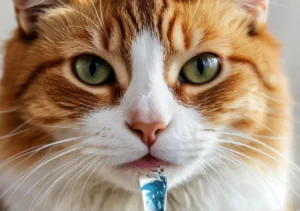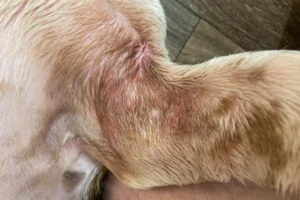Cats and tulips may seem like an innocent pairing, but did you know that cats can actually be allergic to tulips? Why are cats allergic to tulips? Let’s explore this intriguing topic further.
The Science Behind Cat Allergies
Cats can be mysterious creatures, but when it comes to allergies, the science behind their reactions is quite fascinating. When a cat comes into contact with a plant like tulips, their immune system may mistakenly identify certain proteins in the plant as harmful invaders. This triggers an allergic reaction, leading to symptoms like sneezing, coughing, watery eyes, or even skin irritations.
One key component that plays a significant role in cat allergies to tulips is a protein called Fel d 1. This protein is found in a cat’s saliva, skin, and urine, and when they come into contact with tulips, the protein can transfer onto the plant. If a cat then interacts with or ingests the tulip, their immune system can react to the Fel d 1 protein, causing allergic symptoms to manifest.
Another interesting point to note is that not all cats are allergic to tulips. Just like humans, cats have individual sensitivities and genetic predispositions that can make them more prone to developing allergies. So, if your feline friend starts showing signs of an allergic reaction to tulips, it may be due to their unique immune response to the plant’s proteins.
Symptoms of Cat Allergies to Tulips
Identifying an allergic reaction in your cat can be challenging, especially when they can’t tell you what’s wrong. However, there are common symptoms to look out for that may indicate your cat is allergic to tulips. Keep an eye out for sneezing, coughing, wheezing, or difficulty breathing, as these respiratory symptoms can be a sign of an allergy.
Skin irritations like redness, itching, or hives may also develop if your cat has a tulip allergy. Keep an eye on their coat for any signs of irritation or inflammation, as this could be a result of coming into contact with the allergens in the plant. Additionally, watery eyes, runny nose, or vomiting are other symptoms that might indicate your cat is having an allergic reaction to tulips.
If you suspect your cat is allergic to tulips, it’s essential to consult with your veterinarian for proper diagnosis and treatment. They can help confirm the allergy and recommend appropriate measures to manage your cat’s symptoms effectively. Remember, a happy and healthy cat is a cat free from allergies to tulips.
Treatment Options for Cats Allergic to Tulips
If your feline friend is showing signs of allergies to tulips, there are several ways to manage their symptoms effectively. The first and most straightforward method is to remove tulips from your home and any areas where your cat spends time. This can help minimize their exposure and alleviate their allergic reactions. Additionally, ensure your cat has a clean and allergen-free environment by regularly cleaning and dusting their living spaces.
For severe cases, consulting with a veterinarian is crucial. They may prescribe antihistamines or other medications to help control your cat’s symptoms. These medications can provide relief from itching, sneezing, and other discomfort caused by tulip allergies. Remember to follow your vet’s instructions carefully when administering any medication to your cat.
Moreover, grooming your cat regularly can also help reduce allergens on their fur, minimizing their exposure to tulips and other potential allergens. Consider using hypoallergenic wipes or bath products to keep your cat’s coat clean and free of allergens. Lastly, if your cat’s symptoms persist or worsen, seek immediate veterinary attention for further guidance and treatment options.
Are All cats Allergic to Tulips?
Not all cats may develop allergies to tulips. The likelihood of a cat being allergic to tulips can be influenced by various factors, including genetic predisposition, overall health, and previous exposure to allergens. Some cats may have a higher sensitivity to certain plants, while others may not exhibit any allergic reactions at all.
One crucial factor to consider is the individual cat’s immune system. Cats with weakened immune systems may be more prone to developing allergies, including sensitivities to tulips. Additionally, certain breeds of cats may have a higher predisposition to developing allergies compared to others. It’s essential to monitor your cat’s behavior and health closely, especially when introducing new plants or flowers into their environment.
Ultimately, if you suspect your cat is allergic to tulips or any other substance, it’s best to consult with your veterinarian for proper testing and diagnosis. Understanding your cat’s specific allergies can help you better manage their condition and provide them with a safe and comfortable living environment.
Can Cat Allergies to Tulips Be Prevented?
As much as we love seeing our furry friends frolic around tulips, it’s crucial to prioritize their health. To prevent cat allergies to tulips, consider these tips:
- Keep Tulips Out of Reach: Restrict your cat’s access to tulips by placing them in hanging baskets or high shelves.
- Regular Cleaning: Frequently clean areas where tulips are placed to remove pollen that may trigger allergies.
- Consult Your Vet: If your cat shows signs of allergies, seek guidance from your veterinarian for the best course of action.
- Plant Safe Alternatives: Consider planting cat-friendly flowers like catnip or cat grass instead.
Remember, prevention is key to keeping your cat happy and healthy around tulips!
Interesting Facts About Cat Allergies
Did you know that cats can be allergic to tulips due to a protein called tulipalin? Here are some intriguing facts about cat allergies to tulips:
- Unique Sensitivity: Cats have a heightened sensitivity to certain proteins in tulips, leading to allergic reactions.
- Symptoms: Allergy symptoms in cats can range from sneezing and coughing to skin rashes and watery eyes.
- Avoidance is Key: Preventing exposure to tulips can help mitigate allergic reactions in cats.
- Genetic Predisposition: Some cats may be genetically predisposed to developing allergies to specific plants like tulips.
Stay informed about your cat’s allergies to ensure they stay healthy and happy!
Alternatives to Tulips for Cat-Friendly Homes
If you want to spruce up your home with plants but keep your feline friends safe, consider these cat-friendly alternatives to tulips: – Spider Plant: Not only is this plant safe for cats, but it’s also easy to care for and adds a touch of green to your space. – Areca Palm: This pet-friendly plant not only looks tropical but is also non-toxic to cats, making it a great addition to any cat-friendly home. – Bamboo: Bamboo is a low-maintenance plant that adds a zen vibe to your home while being safe for your furry companions. – African Violet: These colorful and cheerful flowers are a safe option for cat owners looking to brighten up their space without risking their pet’s health. – Boston Fern: This lush plant is not only safe for cats but also helps purify the air in your home, making it a win-win for both you and your feline friend.
Fun Ways to Keep Cats Safe From Allergens
Making sure your cats are safe from allergens like tulips can be both fun and rewarding. Here are some creative ideas to ensure your furry friends stay healthy and happy: – Create a Cat-Friendly Garden: Designate a special area in your backyard with safe plants for your cat to explore and enjoy. – DIY Cat Toys: Keep your cats entertained indoors with homemade toys to distract them from potentially harmful plants like tulips. – Feline Hideaways: Provide cozy spots around your home where your cats can retreat to if they’re feeling overwhelmed or may be exposed to allergens. – Interactive Feeding: Engage your cats with interactive feeding toys to keep them mentally stimulated and less likely to nibble on plants that could trigger allergies. – Regular Vet Check-ups: Schedule routine visits with your veterinarian to ensure your cats are healthy and to address any allergy concerns promptly.
Remember, a cat-friendly home doesn’t have to compromise on style or greenery. By choosing safe alternatives to tulips and implementing fun ways to keep your cats safe from allergens, you can create a space that is both beautiful and pet-friendly.
Alex, a passionate animal lover, has experience in training and understanding animal behavior. As a proud pet parent to two dogs and three cats, he founded AnimalReport.net to share insights from animal experts and expand his knowledge of the animal kingdom.




